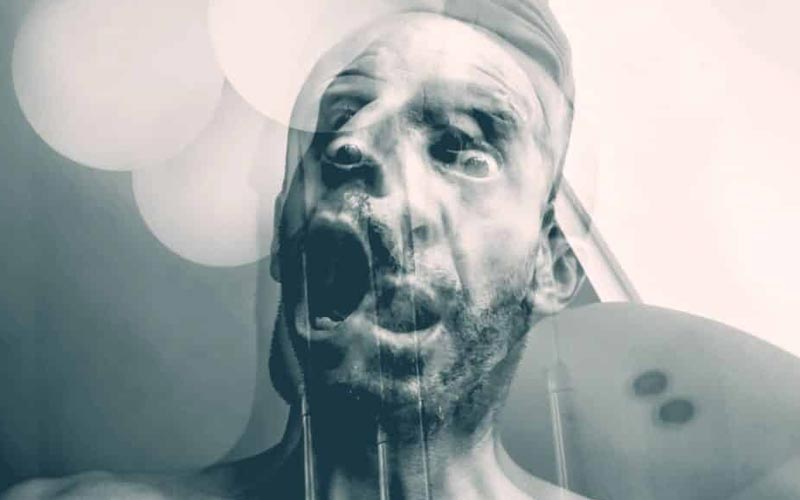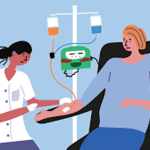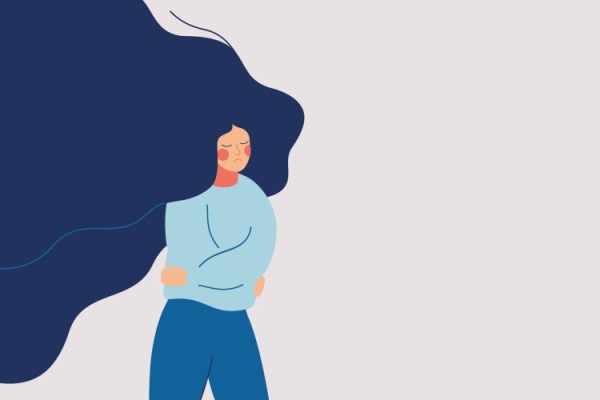Table of Contents
Paranoid schizophrenia is a common subtype of schizophrenia. One of the common symptoms of paranoid schizophrenia is a delusion. In general, delusional thinking is common among schizophrenic people. Alongside paranoid thoughts persist. This makes it hard to distinguish it from everyday thoughts.
Paranoid schizophrenia is a brain disorder. American Psychological Association (APA) declared the following in 2013. It is considered paranoia as an active symptom of schizophrenia. Later modifications did not consider it as a separate disorder. The disorder is now known as schizophrenia.
However, the original term has been around for decades. This is why many people are not accustomed to the new term. Hence the terms are used interchangeably at times. Schizophrenia makes it hard to tell any difference. You won’t realize if it’s real or just your thoughts. This will affect the way you perceive the world. The significant changes in thoughts make it hard to stay in the real world.
The outlook of paranoid schizophrenia
Not every schizophrenic person develops paranoia. However, borderline and psychotic cases develop paranoia. It is necessary to observe early symptoms. This will help to seek better treatment. Therefore, it will help you lead a better life.
A schizophrenic person has a distorted perception of life. Common symptoms involve hallucinations and delusions. The delusions are life-threatening. These people may have a constant fear of getting harmed. Someone may hurt them. Or, someone may be watching them. This is a constant train of thought in schizophrenic people.
For instance, delusional thoughts can be as follows. They may feel television is sending particular messages for them constantly. These thoughts cause more fear and anxiety. It completely disrupts daily life. A person with schizophrenia finds it hard to get along with others. Hence it hinders meetings with friends and family.
Can paranoid schizophrenia be a diagnosis?
Research findings suggest the following. 50% of schizophrenic people experience paranoia.
Schizophrenia is essentially a spectrum disorder. In simple terms, several conditions, symptoms, and traits are linked. Before 2013, paranoid schizophrenia was distinct. However, APA decided to get rid of confusion. The Diagnostic and Statistical Manual of Mental Disorders provides guidelines for experts. They termed paranoia as a symptom. Hence, it is no longer considered a form of schizophrenia.
Some reasons for its removal as a subtype are as follows. There were limited diagnostic criteria to confirm paranoid schizophrenia. The results showed not very reliable. Alongside, the validity of the diagnosis became poorer. Hence, paranoia is today known as just a symptom.
Signs and Symptoms of Paranoid Schizophrenia
Signs of schizophrenia begin in the early 20s. For others, it may start in the mid-20s. Early-onset of schizophrenia begins before age 18. It is sporadic for children to be diagnosed with schizophrenia. If in case it happens, the onset is around 13 years of age.
Some areas affected by schizophrenia are listed below.
First, the thought processes disrupt. Second, a person’s feelings and perceptions distort. Third, disturbance in sleeping patterns. Fourth, the ability to communicate reduces. Fifth, the ability to concentrate and complete tasks lessen. Sixth, the person finds it difficult to relate to others.
Specific common symptoms of schizophrenia are as follows.
Following are some native symptoms of schizophrenia. The person lacks motivation. The pace and movement reduce. The sleep cycle alters. Libido or sex drive decreases. The person lacks self-care. The thinking process disorganizes. One may observe a change in their body language. The emotions felt may be confusing at times. These people completely withdraw from family and friends. Such people fail to participate in activities. The final symptom is hallucination and delusion.
People with paranoia often experience the following. First, they may feel angry and anxious. Alongside they may feel upset and confused. Paranoid people may be suspicious of the people surrounding them. They may fear someone persecuting them. People with paranoid schizophrenia fear being chased. There is a constant fear that someone might poison them. They fear that people may conspire against them.
Some other irrational thoughts persist. For instance, they fear other people controlling their thoughts. Paranoid people feel others might broadcast their thoughts. Or they may fear others taking control of their actions. Most importantly, suicidal thoughts prevail.
Some schizophrenic people may not develop paranoia. Some other common symptoms may persist. They are as follows.
The positive symptoms of schizophrenia are delusions and hallucinations.
Delusions
What is delusion? These are nothing but beliefs that don’t exist. These people firmly hold onto their beliefs. However, opinions are not right. These beliefs contradict regular thoughts. Hence, ordinary people find it hard to believe such thoughts. Some common delusions are listed below.
The delusion of control- The schizophrenic people believe external agents control them. Now the external forces maybe the government. Or it may even be aliens.
The delusion of grandeur- Some schizophrenic people believe to possess a lot. They consider themselves billionaires at times. Some think to have exceptional abilities. Alongside they believe in having wealth and riches in abundance.
The delusion of persecution- Often, schizophrenic people feel cased. They think that the world may be chasing them. Or even one person must be out there to get them.
The delusion of reference- Insignificant items catch the attention of schizophrenic people. They feel such items are specially designed for them. At times, they may go to great lengths. These people tend to boast a lot about specialities.
About 90% of them experience delusions. However, the delusional may not be the same for all.
Hallucinations
Hallucinations are certain sensations. They do not exist in real life. However, schizophrenic people do feel it most of the time. These experiences are not understandable to the average population. The person experiencing it may feel it’s vivid and real. At times it may feel urgent too.
However, it’s all in their mind. It is the manifestation of repressed thoughts. Usually, traumatic situations give rise to such hallucinations. About 70% of schizophrenic people experience hallucinations. Hallucinations can be of the following types.
Auditory hallucinations
This is the most common type of hallucination. Most schizophrenic people experience this hallucination. It involves hearing voices. Sometimes multiple voices are heard. Such people hear a lot of whispering and murmuring. The voices may be angry. Or the voices may be demanding at times. Such people report being controlled by voices. They act based on the voices.
Olfactory hallucinations
These are hallucinations of taste or smell. Or it may be both at times. Some may be good, whereas others may be bad. In reality, they are not present. Some people may fear being poisoned. This happens especially they have eaten something. It can make situations pretty confusing for ordinary people. Thus, these people refrain from participating in social gatherings.
Visual hallucinations
It includes seeing stuff that is not present in reality. It can be people, lights, patterns, or shapes. Such people may see dead people. They see dead loved ones can be distressful. There may be alterations in perceptions. Thus, such people may find it difficult to judge distance.
Tactile hallucinations
These are hallucinations of movements. Some people may feel certain unreal sensations in their body. Or they may feel specific movements on their body. However, in reality, they don’t exist. For instance, they think their body is lifted off the ground. In reality, they are just standing in a place. Some fears are more irrational. Schizophrenic people may fear insects crawling out of their bodies.
Hallucinations do not always conclude schizophrenia. Mood disorders or schizoaffective disorders may also occur. Other physical and mental health conditions may also persist. Schizophrenic people may hallucinate in all these cases. A person may be under the influence of certain drugs. Such drugs may also cause hallucinations.
Disorganized speech
All schizophrenic people face a common difficulty. It is difficult for them to concentrate. Alongside, they have difficulty maintaining their flowing thoughts. This manifests in the way they talk. It leads to disorganized speech. Such people speak incoherently. Their response might not match a particular question. Or they may not respond at all. The responses are usually gibberish.
The thoughts may be illogical. They may even jump from one topic to another. Here are sure signs of disorganized speech.
The associations of words are pretty loose. Schizophrenic jump back and forth between unrelated topics. Hence the conversations seem confusing. Most of the times, it is illogical. The next sign to look out for is perseveration. These people may tend to things over and over again.
Certain words may be new to ordinary people. This neo-language is nothing but made-up words. Such words make sense to schizophrenic people. However, ordinary people won’t get what they say. Certain rhyming words may be used frequently. These words hardly have any meaning at all. At times, cognitive disorganization may be severe. In such cases, it is tough to interpret what they say.
Disorganized behaviour
Schizophrenic people have difficulty working. Any goal-directed behaviour is hindered. They are likely to have difficulty in beginning any work. Or they may find it impossible to complete any task. The disorganization is gross. Therefore, independent functioning is hindered as well.
Disarranged behaviour manifestations are as follows. The first thing is declining daily activities. The emotional responses to any situation are inappropriate. Individual responses are unpredictable at times. Schizophrenic people have difficulty controlling their impulses. Thus, specific actions are unreasonable at times. Certain behaviours are bizarre. Some even lack any purpose. Certain activities are impaired. For instance, they are brushing or bathing. Some may even feel lost when dressing.
Inappropriate affect
Affect usually refers to the emotional responses of an individual. It also includes the way such emotions are expressed. For instance, they are smiling when a person is happy. In paranoid schizophrenia, people show felt the effect. That is, there are a few facial expressions. Alongside, no mannerisms and voice tone are observable. Hence it is hard to understand how they are feeling.
At times, the effect observed may be inappropriate. Their reactions contradict the situations. For instance, they are laughing in a sad situation. Emotional expressions are not the only thing they lack. Besides, they fail to make any eye contact. Facial expressions may be blunt.
Suicidal thoughts. Tending to commit suicide is normal in schizophrenia. More often, these feelings persist in psychotic cases. It becomes severe when untreated. The people around them must help them out. In case they observe such thoughts, call help immediately.
Diagnosis of paranoid schizophrenia
According to DSM V, these are the following diagnostic criteria.
Two or more criteria must persist for six months or more. The other criteria include-
- Delusion
- Hallucination
- Highly disorganized or catatonic behaviour
- Disorganized speech
- Lack of pleasure in life
- Social and occupational dysfunction
- Flat emotional affect
Causes of paranoid schizophrenia
Genetics
Genes are the most significant factor for paranoid schizophrenia. This may run in families. A sibling, relative, or close parent may have schizophrenia. In such a case, the disorder may pass on to a family member. However, other factors may add to it.
Genes in themselves won’t cause such levels of deterioration. Genes make the person more susceptible to schizophrenia. Several triggering factors may account for the formation of schizophrenia.
Changes in brain structure
The brain spaces are called ventricles. In schizophrenic people, such ventricles become larger. Usually, they are larger than usual. Some parts of the brain deal with memory. It is the medial temporal lobes. The lobes become smaller in people with paranoid schizophrenia. The brain cells reduce them.
The brain may lose several tissues over time. There is a grey matter in the brain. It acts as a connecting bridge t connect nerve cells. Schizophrenic people are found to have lesser than average grey matter.
Changes in brain chemicals
The chemicals are typically called neurotransmitters. These help control communications within the brain. Two such vital chemicals are glutamate and dopamine. Their main task is to carry messages to cells. It does so along brain pathways. These pathways control thinking, perception, and motivation.
In paranoid schizophrenia, dopamine is related to hallucinations
Delusions are also linked to dopamine release. Brain areas running on dopamine becomes rapid in schizophrenic people. The overactivity can be stopped using antipsychotic drugs.
Glutamate is another important neurotransmitter. It helps people to memories and learns new things. Besides, it tells what a brain part would do. The glum ate flow may lessen when conditions worsen. Hence chronic people have difficulty in memorizing things. Also, the train of thought is lost at this point.
Changes in the environment
Environmental triggers may also affect brain activity. This, in turn, may cause increased problems in schizophrenic people. Viral infections may affect your birth. Before your birth, these infections increase the chances of schizophrenic tendency—for instance, improper nutrition of the pregnant mother.
Certain mind-altering drugs may cause damage. They are psychoactive drugs. For example, methamphetamine and LSD. These psychoactive drugs may increase the chances of schizophrenic activity. People taking such medications can hallucinate ethyl may have delusional ideas. Or their train of thought may be out of context. The resulting emotions may be inappropriate. One may have difficulty thinking clearly.
Pregnancy or complication at birth
Complications at birth may cause the development of mental disorders. One such common disorder is paranoid schizophrenia. Certain common birth complications are as follows. It includes low birth weight. The baby may be infected during pregnancy. The oxygen level may down during labour. This condition is called asphyxia.
The mother may be diagnosed with premature labour. During pregnancy, a mother may be obese. It can be found through maternal obesity diagnosis. All these factors may give rise to specific mental health disorders.
Childhood trauma
Trauma is one of the major factors underlying schizophrenia. These people may have experienced abuse or neglect in childhood. Hence, the most common hallucinations are of abuse and neglect. Some children may experience the death of loved ones. Or they may be separated at birth.
Hence, they are devoid of parental affection. This leads to repressed feelings. Any trigger brings back the traumatic incidents. The result is the onset of schizophrenia or related disorders.
Treatment of paranoid schizophrenia
Antipsychotics
These are medications to treat schizophrenia. These antipsychotic drugs tame delusions and hallucinations. These can be in liquid, pill, or injection form. Antipsychotic shots are also available. This suits people who often forget to take medications.
The medications are provided on the following basis. The first factor is how well it counteracts the symptoms. The second factor is the cost. The third factor is the side effects that come with each dosage. The final factor is how often the medication should be taken.
Usually, there are two groups of antipsychotic drugs. The older group is a specific group. It is the first-generation medications. One may call it the conventional antipsychotics. Some of the common names are as follows. They are Fluphenazine, Perphenazine, Haloperidol, Thioridazine.
The second type is called second-generation antipsychotics. They are atypical antipsychotic drugs. Some of the common medications are listed here. They are Cariprazine, Iloperidone, Clozapine, Lumateperone tosylate, Olanzapine, Lurasidone.
Psychotherapy
It virtually talks about therapy. It is a crucial part of the whole therapy procedure. This allows the doctor to know any symptoms prevailing in them. Some of the common forms of psychotherapy are-
Individual psychotherapy
Usually, sessions are held. Here the therapist takes over the case. The client is taught how to deal with their thoughts. This, in turn, affects their behaviours. The client learns more about heir illness. The effects are explained to them. This allows them to know the differences.
Hence, schizophrenic people can distinguish reality from fantasy. This may further help them to manage their daily lifestyle. Besides, it may help them to lead a better everyday life.
Cognitive Behavioural Therapy or CBT
This therapy aims at changing a person’s thought processes. The thinking perspectives may change. The therapist helps to deal with delusions. The hallucinatory voices or images are taken care of. Medications accompany the CBT sessions. This helps to know the triggering factors. Hence, one understands what causes such psychotic episodes. Next, therapists help to reduce such future triggers.
Cognitive Enhancement Therapy or CET
For paranoid schizophrenia, CET is one fine treatment. In medical terms, it is cognitive remediation. It allows patients to understand social cues. Besides, it helps to understand d any triggering factors. It also improves memory and attention. The ability to organize thoughts restores.
Now, these people can organize their thoughts better. It helps them to speak better. They can reason well. The responses become more prominent. The treatment may be computer-based. This trains the brain to be more organized. Or they may carry out group sessions.
Psychosocial therapy
There are certain types of psychosocial therapy. Any improvement in psychotherapy will be of help here. The schizophrenic people would need a little more help. This would allow them to be a regular part of the community. However, the recovery level depends on how severe the case is. Here are some therapy types.
Social skills training
The main focus is on the improvement of communicative skills. Alongside, they take care of social interactions.
Self-help groups
Schizophrenic people under treatment must participate in social causes, including community care. The second type may be outreach programs. All these will help the person to sharpen his social skills. One such outreach organization is NAMI. It is the National Alliance on Mental Illness. It offers a peer-to-peer program. The program is available for free.
For adults, they keep up to 10 sessions. People with any mental illness can learn more about their condition. It may even be for ones who have seen their close ones suffer.
Rehabilitation
Schizophrenia is prevalent during the career-building years. Hence rehabilitation programs may include the following. It may begin with job counseling. There can a support system aimed at problem-solving. Further, they also teach money management. Educating a schizophrenic person in these areas may shape them better. Hence paranoid schizophrenia can just be a phase of life.
Coordinated Specialty Care or CSP
This treatment goes out for a particular group. Some patients experience psychotic episodes for the first time. This treatment is dedicated to their welfare. It is a team approach. This involves psychological therapy. Alongside appropriate medications, continue.
Social and employment services are included here. Therefore, more family members must join the therapy sessions. The aim is to change the direction of illness. Eventually, the prognosis for the illness shifts. This helps to reduce the disease at the early stages. Treatment at early stages is extremely beneficial. These intensive treatments benefit in the long term. It prevents any further relapse.
Assertive community treatment
This therapy is specially called ACT therapy. It offers a particular type of service. They are entirely personalized. The main aim is to meet daily life challenges. For instance, they were taking proper medications on time. Most schizophrenic individuals fail to do so. ACT helps to carry on daily functioning with ease. These therapists handle any problem proactively. Thereby, it prevents any future crisis.
Learn how to help someone with delusional disorder
First
Beware of your tone. The patient is key to any solution. Hence keep your tone down when the person is in confusion. It might be tough to understand what he/she means to say. Disorganized thoughts are affecting their speech. Listen carefully. Observe any physical movements. This will help you to interpret better.
The tone and voice must be low and calm. Make sure to choose words wisely. Don’t come up with confrontational dialogues. Show your concern for the person. However, it must be in the form of an opinion. An opinion is always better than a judgment.
Remember, these people need your help. Try to avoid any explanation when they are delusional. Let them calm down. Express your concern when they act more normal.
Second
Try to stay neutral. At first, it may seem illogical. However, one must not try to make them beige the delusions aren’t real. This will cause them more discomfort. The schizophrenic person might begin arguing. They may impart explosive behaviour. Conflicts may go further. This will isolate them more. Hence, one must not try to force them to understand.
Be on an impulse to agree with them. However, could you not buy their delusional thoughts? This might add you to the psychosis.
Third
Give them space. A person with paranoid schizophrenia needs space. Suppose you the person engrossed in delusional thoughts. Don not they counteract them. Give them some space. Try to observe body movements. Make sure not to create more fear. This will further agitate them.
Your instinct might tell you to comfort them. However, they might interpret it the wrong way. Thus, they may end up being more aggressive.
Fourth
Give them the support they need. Help your loved ones in times of need. Hep they attend the doctor’s appointments. You may even help them with their medications. One may do so y keeping drugs on track. Help them run errands. Go on walks with them. Accompany them when they feel lonely.
Concluding
Paranoid schizophrenia can be short term. Or it may last one’s whole life. Therefore, be kind to them. Specific behavioural changes may seem inappropriate. However, do not come across as harsh to them. Their minds are in a state of confusion. Any added stimulus may trigger aggression. These people may become more depressed than usual. Hence treatments may hinder.










